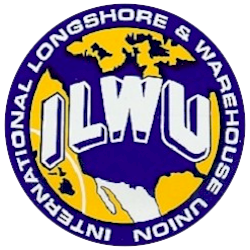
Waterfront History

Waterfront History
The Big Strike of
1934
By Dick Meister
Special To The Examiner
It's the 67th anniversary of what's known in labor lore as "The Big
Strike" -- a remarkable event that brought open warfare to San
Francisco's waterfront, led to one of the very few general strikes in
U.S. history and played a key role in spreading unionization nationwide.
It began in May of the dark Depression year of 1934 when longshoremen
finally rebelled against their wretched working conditions in San
Francisco, then one of the world's busiest ports, and in the West
Coast's other port cities.
Longshoremen were not even guaranteed jobs, no matter how experienced or skilled they might be. They had to report to the docks every morning and hope a hiring boss would pick them from among the thousands of desperate job-seekers who jammed the waterfront for the daily "shapeup." Bosses rarely chose those who raised serious complaints about pay and working conditions or otherwise challenged them, but were quite partial to those who slipped them bribes or bought them drinks at nearby bars.
Even those who were hired often weren't sure how long they'd work. They might be needed for only a few hours or for as many as 18, sometimes even more, usually worked at top speed and without breaks. Serious injuries were common. For all that, they were paid a mere 85 cents an hour. That brought the average longshoreman about $10 a week, low pay even by Depression standards. What the longshoremen wanted above all was to end the indignity and insecurity of the "shapeup."
They wanted to decide for themselves how the dock work should be allocated, with pay and working conditions determined in negotiations between their union and employers. The 32,000 dock workers and their leaders -- Harry Bridges, a young Australian sailor-turned-longshoreman the most prominent among them -- were denounced by conservative union leaders, employers, politicians and the press as Communists bent on violent revolution.
But despite the heavy opposition, the striking longshoremen managed to shut down every port along the 1,900 miles of coastline between San Diego and Seattle. After 57 days, employers, backed by state and local government officials, issued an ultimatum: Call off the strike or they would bring in strikebreakers under police escort, in trucks and by rail, to forcibly open the ports. Which is what employers tried to do on July 5, 1934 -- a day known in West Coast ports since then as "Bloody Thursday."
The major attempt was launched in San Francisco, where nearly 1,000 heavily armed policemen battled several thousand longshoremen and supporters. Acrid clouds of tear gas enveloped the combatants. Gunfire crackled. Trucks were overturned and burned, boxcars set on fire. Shouting, screaming men grappled, swung clubs, bats and sticks, tossed bricks and stones. Dozens fell bleeding on the docks and nearby streets.
At day's end, 2,000 National Guardsmen in full battle-dress, armed with bayoneted rifles and machine guns, marched in at the governor's order to occupy the battle zone. The fighting had ceased, but by then two men were dead, killed by police bullets, and more than 100 were wounded or seriously injured. Some 800 people were under arrest. Three days later, more than 40,000 San Franciscans joined in a two-mile-long funeral cortege for the men who had been killed on their city's docks.
They marched slowly up Market Street, eight to 10 abreast behind the coffins laid on crepe-draped, flower-strewn flatbed trucks. Nothing was heard save the scrape and shuffle of feet and a union band playing Beethoven's funeral march.
Public support continued to mount, until a week later it erupted into a citywide general strike. Emergency services continued, but otherwise San Francisco came to a virtual standstill. The state was about to declare martial law, but after four days, government officials and the conservative leaders of the American Federation of Labor who controlled the city's union hierarchy prevailed. San Francisco's Labor Council voted to call off the general strike even though longshoremen remained on strike.
The strikers nevertheless scored one of the most important victories in U.S. labor history. Victory came through President Franklin Roosevelt, who had ignored the entreaties of employers and state officeholders to halt the supposed insurrection. Certain it was waged in support of a legitimate demand for union rights that employers had unfairly rejected, Roosevelt allowed the general strike to run its course and then appointed an arbitration panel to settle the dispute.
The panel granted longshoremen almost all they sought. Employers were required to formally recognize and bargain with the dock workers' union, raise pay, establish a standard workweek and abolish the "shapeup." All hiring was to be done through union-operated hiring halls, with jobs handed out in rotation so work could be shared equally. Soon after that, the longshoremen merged with the warehousemen who worked closely with them. Their International Longshoremen's and Warehousemen's Union became one of the most powerful, democratic, progressive and influential of all unions. The longshoremen's victorious struggle to create the union -- their Big Strike -- was an extremely important signal to the nation.
It showed what could be done by workers united in a common cause, however powerful and violent the opposition. It showed that they could bring a major city to a halt. And it showed that they could win the crucial rights so long denied them.
Dick Meister, a San Francisco freelance columnist, has covered labor issues for four decades as a reporter, editor and commentator